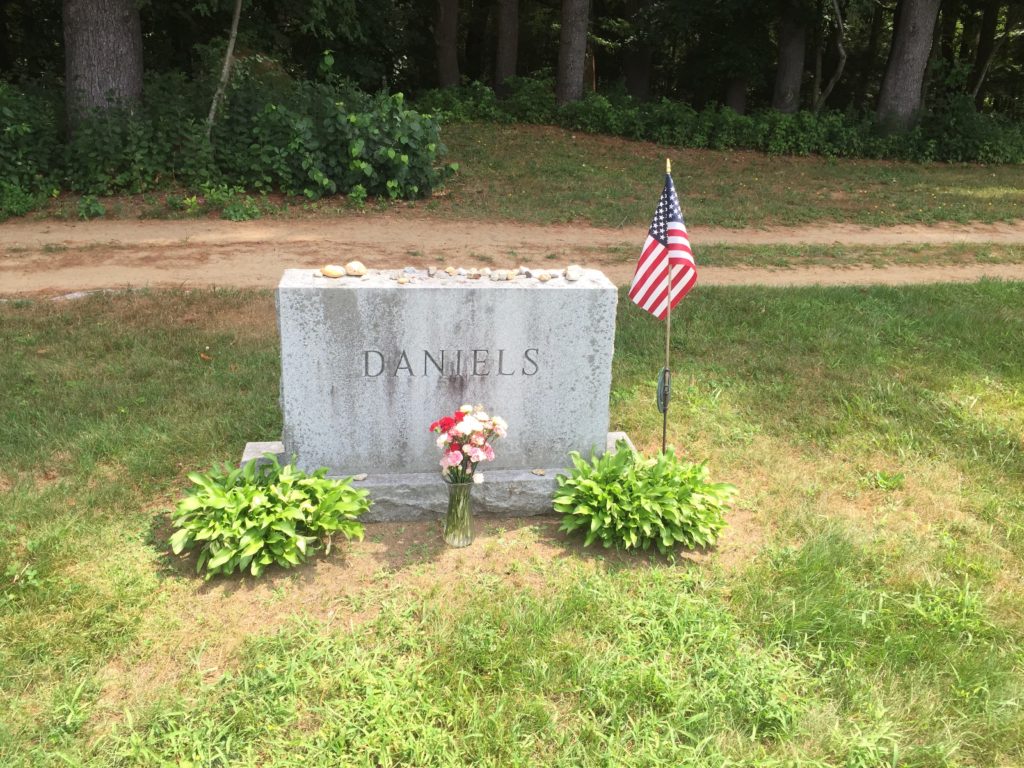Erik Visits an American Grave, Part 703
This is the grave of Jonathan Daniels.

Born in 1939 in Keene, New Hampshire, Daniels was a young man moved by duty. He grew up Congregationalist but while he went to college at Virginia Military Institute, he had a change of heart, became an Episcopalian, and considered going into the ministry to work on social justice. He delayed that a bit, going to Harvard for graduate work in literature. But he could not put aside his convictions any longer. He dropped out and enrolled at the Episcopal Theological School in Cambridge in 1963.
This was a three-year program before he could become an Episcopalian minister. But he never had the chance to finish. Moved by the injustice against Black Americans in the South and the protests led by Dr. Martin Luther King, Daniels went South in 1965 to support the freedom struggle in Alabama. King was gathering ministers to join the march from Selma to Montgomery. Daniels and some friends decided to join them. They only intended to stay a few days. But he felt the need to stay longer. He wrote,
Something had happened to me in Selma, which meant I had to come back. I could not stand by in benevolent dispassion any longer without compromising everything I know and love and value. The imperative was too clear, the stakes too high, my own identity was called too nakedly into question … I had been blinded by what I saw here (and elsewhere), and the road to Damascus led, for me, back here.
He returned to Massachusetts briefly, got permission to work from Alabama on his classes, and returned to join the movement. While in Selma, he stayed with a Black family and fought to integrate the city’s Episcopal church by simply showing up with interested Black people. The church’s white congregation was not amused or supportive. While he was there, the Voting Rights Act passed Congress. But there were plenty of fights to come. Stokely Carmichael remembered that Daniels wanted to work for SNCC in Lowndes County, but the organization refused because there was no way they could protect him out there. Not that such a thing was likely to stop Daniels. He went to the Southern Christian Leadership Conference, who was doing some organizing in Bloody Lowndes, and volunteered. They gladly accepted his help.
In August 1965, he was part of a group of 29 protestors who went to the town of Fort Deposit, Alabama to picket its white-only stores. They were all arrested and thrown into a jail cell without air conditioning for the next six days. Upon release, they were just dropped outside with no way to get back. Daniels and two others–a Catholic priest and two Black SNCC activists–walked to a Black owned store to buy some cold drinks. They were confronted by a man named Tom Coleman, a white racist with a gun who began to harass them. He pointed his gun at one of the Black activists, a 17 year old girl named Ruby Sales. At this point, Daniels shoved her down and Coleman fired, killing him. He shot the priest too, but he survived after a touch and go surgery.
It’s not as if Daniels hadn’t considered that death might be his fate. He wrote, “I lost fear in the black belt when I began to know in my bones and sinews that I have truly been baptized into the Lord’s death and resurrection, that in the only sense that really matters I am already dead, and my life is hid with Christ in God.” But who knows how really seriously he took this possibility.
Coleman of course was acquitted of manslaughter charges by an all-white jury. He never again faced charges, retiring after a career working on highway crews, and died in 1997. This grotesque acquittal led to a new fight to integrate southern juries through Operation Southern Justice, which did succeed in breaking open the all-white jury system.
Daniels became a martyr for the civil rights movement, one of those who laid their lives on the line for justice and who lost it. King stated, “One of the most heroic Christian deeds of which I have heard in my entire ministry was performed by Jonathan Daniels.” Daniels was 26 years old. Lyndon Johnson ordered an investigation and sent his aide Lee White to Alabama to return Daniels’ body to his parents. Stokely Carmichael traveled north to attend the funeral, as they had become close.
Jonathan Daniels is buried in Monadnock View Cemetery, Keene, New Hampshire.
This grave visit was sponsored by LGM reader contributions. Thanks! If you would like this series to visit other martyrs of the civil rights movement, you can donate to cover the required expenses here. There are so many. Viola Liuzzo is in Southfield, Michigan and James Chaney is in Meridian, Mississippi. Previous posts in this series are archived here.


